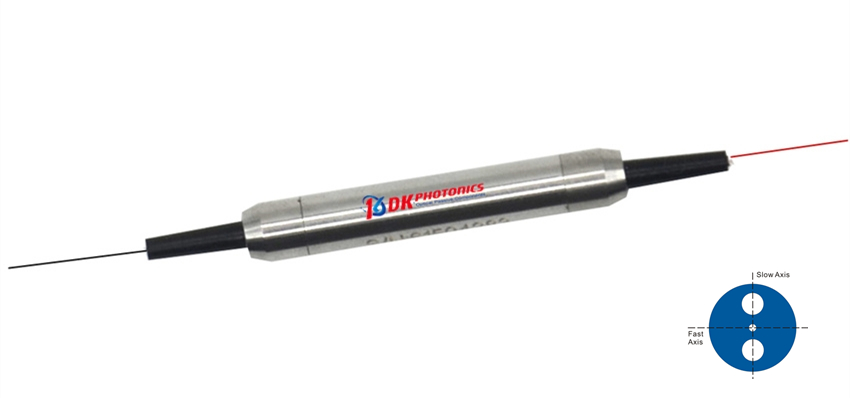Applications that involve the transmission of data and light guiding are highly benefitting from fiber optic cables as they can safely transmit data at a wide bandwidth over long distances. This is why they find huge demand in industries like medical, military, and networking. Since unpolarized light travels through optical fibers with considerable losses and distortions, especially over long distances, it is critical to use polarized light in fiber optic cables for data transfer. To solve this problem, in-line polarizers are used as they help in facilitating the strongest and cleanest output signal.

In-Line Polarizers – An Ideal Solution to Minimize Losses and Distortions
In-line polarizers are small pieces of cable in fiber capable of polarizing the incoming light signals. These devices are called in-line polarizers because they are positioned in-line with the fiber. Fiber with polarization controlled capacity can produce output signals with optimum intensity and bandwidth without causing any hindrance in velocity.
Birefringence – How is it related to polarization in fibers?
Birefringence is an important property of optical materials where the refractive index is dependent on the incoming light’s polarization. This property is most commonly found in nonlinear crystals and various optical fibers as well. Though fiber cores with perfectly circular shape are considered to be ideal, most fibers in practical suffer mechanical stresses caused by bending or handling. This results in shifted geometry and that further leads to polarization-mode distortion along the length of single and multimode fibers. As a result, one polarization mode travels at a different space than the other.
But, the question is how can birefringence affect the performance of optical fibers?
Pulses lengthened due to birefringence produce noisier and lower quality output light signals. Since different polarizations of light can be absorbed by different materials at different angles, it becomes necessary to have control over polarization, particularly in optics applications because light polarization affects the focus of laser beams and which, in turn, influences the cut-off wavelengths of fibers. So, controlled polarization is critical to prevent undesired back reflections.
Factors to Consider While Buying In-Line Polarizers
- Insertion Loss: When a fiber optic polarizer is introduced in a system, it certainly causes attenuation. A good in-line polarizer is the one that causes minimized resultant loss.
- Bandwidth: Since different bandwidths are used in different applications, you must choose an in-line polarizer and fiber that can accommodate desired bandwidth.
- Size: Usually smaller in-line polarizers are preferred because of the space constraints. Besides, they also come with lower insertion loss.
- Extinction Ratio: It is the ratio of the transmission of the desired polarization to the transmission of undesired polarization. Thus, it is the best indicator of quality for an in-line polarizer.
Do you also need in-line polarizers? Keep in mind the above four factors to decide which one is the best for your application.